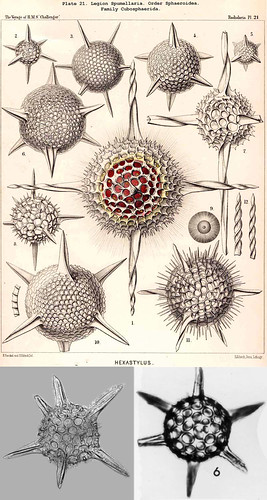3D printing can produce structures which are inherently impossible to produce with current technologies (hand sculpting, molding and casting). That's its main advantage. The question is, how do we take advantage of these properties to its full extent?
Enter Voronoi cells. These are statistical diagrams that are used in meteorology and physics, but also produce 2D and 3D structures that closely mimic nature. Compare multi-cellular seacreatures like Radiolaria and Voronoi cell diagrams below.
It gets better. Some recent Grad work by Eva Friedrich has used voronoi cells to find optimal structure formats to resist deformation of force on a simpler structure. To quoteth:
"It appears that a strength of the Voronoi diagram lies in the potential to produce interesting and unexpected structures which exhibit statically efficient system behaviour. Certain topologies which have emerged during the optimisation process apparently allow for ‘synergy’ effects of coordinated interactions of tear and pressure forces."
The take-away is pretty simple. It is possible to retune conventional structures and make them more organic and well as stronger. Along with 3D printing, it is possible to realize them in unheard manners.
There is a catch of course - the results can be ugly.
"....optimised structures generated with this technique, although performing better than the original structure, look irregular and random, with considerable distortion of the geometry of the structure."
If you look at the top left corner there's a picture of the first printed building by the Dshape - the Radiolaria. Now we have a mathematical way of recreating straight lines and mimicking nature without stealing all the blueprints - true inspiration!



No comments:
Post a Comment